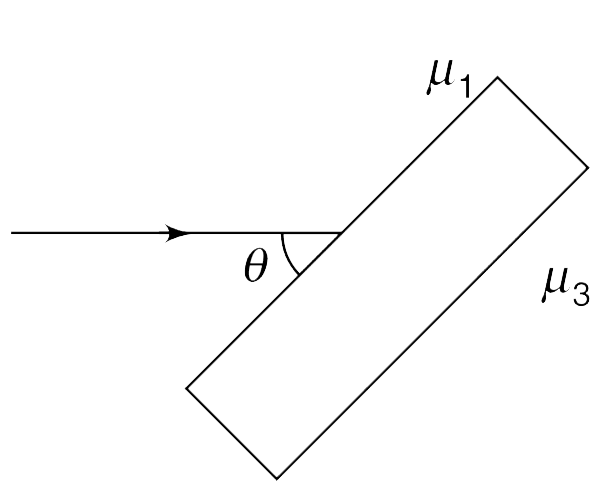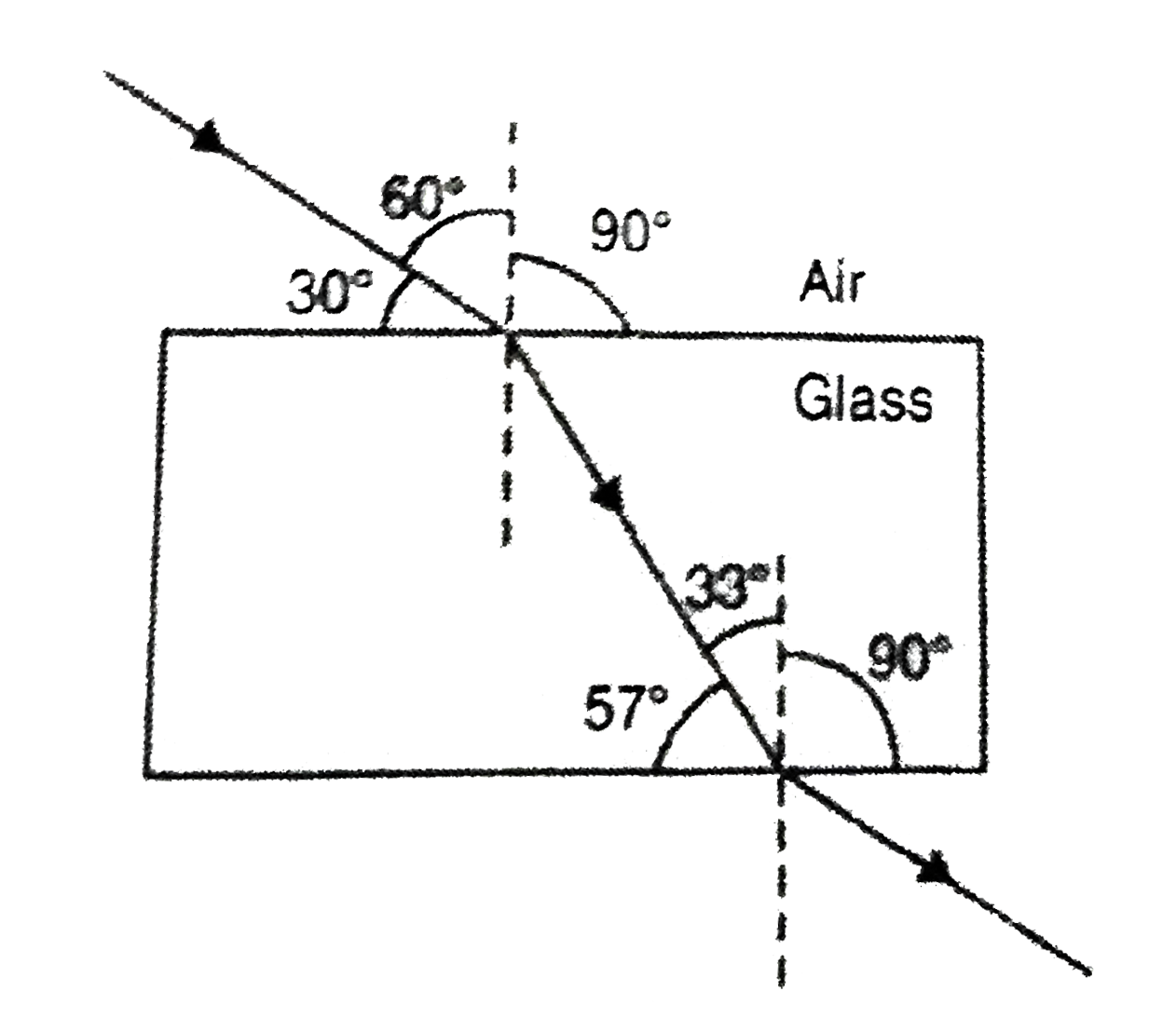A light ray travelling in a medium of refractive index μ1 is incident on a parallel faced glass slab making an angle of θ with the glass surface. The refractive index of the medium on the other side of the glass slab is μ3(>μ1). Find the angular deviation suffered by the light ray.

The correct Answer is:δ=π2−θ−sin−1(μ1μ3cosθ)
Step by step video, text & image solution for A light ray travelling in a medium of refractive index mu_(1) is incident on a parallel faced glass slab making an angle of theta with the glass surface. The refractive index of the medium on the other side of the glass slab is mu_(3) ( gt mu_(1)). Find the angular deviation suffered by the light ray. by Physics experts to help you in doubts & scoring excellent marks in Class 12 exams.
Topper's Solved these Questions
- BOOK - ARIHANTCHAPTER - GEOMETRICAL OPTICSEXERCISE - Level 39videos
GEOMETRICAL OPTICS
- BOOK - ARIHANTCHAPTER - GEOMETRICAL OPTICSEXERCISE - Level 39videos
GEOMETRICAL OPTICS
- BOOK - ARIHANTCHAPTER - ELECTROSTATICSEXERCISE - Level 359videos
ELECTROSTATICS
- BOOK - ARIHANTCHAPTER - MAGNETIC EFFECT OF CURRENTEXERCISE - Magnetic effect of Current45videos
MAGNETIC EFFECT OF CURRENT
Similar Questions
Two parallel rays are travelling in a medium of refractive index μ1=43 . One of the rays passes through a parallel glass slab of thickness t and refractive index μ2=32 The path difference between the two rays due to the glass slab will be
View SolutionA ray of light travelling inside a rectangular glass block of refractive index√2is incident on the glass-air surface at an angle of incidence of 45∘. The refractive index of air is one. Under these conditions the ray will
View Solution
Knowledge Check
- Question 1 - Select One
A light ray is incident at an angle 45∘ on parallel sided glass slab and emerges out grazing the vertical surface. The refractive index of the slab is
A√32B√52C√32D√52 - Question 2 - Select One
A ray of light is incident on a glass slab making an angle of 30∘ with the surface. The angle of refraction in glass, if the refractive index of flass is 1.6 , is
A28∘B33∘C12∘D15∘ - Question 3 - Select One
A ray of light travelling inside a rectangular glass block of refractive index √2 is incident on the glass–air surface at an angle of incidence of 45∘. The refractive index of air is 1. Under these conditions the ray
AWill emerge into the air without any deviationBWill be reflected back into the glassCWill be absorbedDWill emerge into the air with an angle of refraction equal to 90∘
A ray of light travelling in a medium of refractive index μ1 is incident obliquely at the boundary of a medium of refractive index μ2. The ray may reflect back totally only when u1 is _____ μ2.
View SolutionA ray of light is incident on a glass slab of refractive index 1.5, making an angle of 40∘ with the surface. The angle of refraction in glass is
View SolutionTwo parallel rays are travelling in a medium of refractive index μ1=4/3. One of the rays passes through a parallel glass slab of thickness t and refractive index μ2=3/2. The path difference between the two rays due to the glass slab will be
View SolutionA monochromatic rar is incident on a glass slab with glancing angle 30∘ with the surface, If the refractive index of glass with respect to air is √3, the angle of refraction in the glass slab is
View SolutionA ray of light is incident on a parallel-sided glass slab as shown in the figure. The angle of refraction for this ray of light is likely to be :
 View Solution
View Solution
